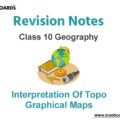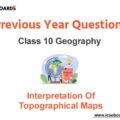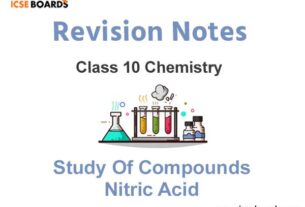Students of ICSE Class 10 should refer to Definitions From Topo Maps ICSE Class 10 Geography Questions below which have come in past board exams. You should always go through questions that have come in previous years. This will help you to understand the pattern of questions in ICSE Class 10 Geography and prepare accordingly. This will help you to get better marks in ICSE Class 10 Board Exams
ICSE Class 10 Geography Definitions From Topo Maps Important Questions
Students should learn the important questions and answers given below for Chapter Definitions From Topo Maps in Geography for ICSE Class 10. These board questions are expected to come in the upcoming exams. Students of ICSE Class 10th should go through the Important questions and answers ICSE Class 10 Geography which will help them to get more marks in exams.
Board Exam Questions Definitions From Topo Maps ICSE Class 10 Geography
Definitions From Topo Maps ICSE Class 10 Geography Important Questions
REPRESENTATIVE FRACTION (RF): It is the ratio between the distances on the map to its corresponding distance on actual ground. The RF on this map is 1:50,000
SCALE: Scale is the ratio between the distance of any two points on the map and the actual distance of the same points on the ground. The scale of the given map extract is 2 cm: 1 km or 1:50,000.CONTOUR: Contours are imaginary lines drawn on maps, joining all places with the same height above
sea level.
CONTOUR INTERVAL: The interval between two consecutive contours is called contour interval (*it is a constant 20 mts in your toposheets.)
INDEX CONTOUR: Contour lines are thickened at regular intervals to make it easier to read contours.For example at every 100 mts the contour line is made darker. The darker lines are called Index Contours.
TRIANGULATED HEIGHT: It is the height of a place which has been calculated using trigonometry, represented by a small triangle e.g. – 540π
SPOT HEIGHT: The height of random places between contours shown with a dot. Eg – .425
BENCH MARK – Height of a place actually marked on a stone pillar, rock or shown on a building as a permanent reference. It is written as BM 200 m.
RELATIVE HEIGHT: Relative height is the height of a feature with reference to the height of the surrounding land and NOT to sea level. It is represented by the height with a small ‘r’ eg –12r.
ROCK OUTCROP: It is a portion of rock jutting above the surface of the earth.
SHEET ROCK: Large areas of rock where the overlying soil layers have been eroded and removed due to mechanical weathering.
STONY WASTE: A large area usually in arid/semi arid regions where the finer sand/soil has blown away leaving a surface covered with boulders, stones and pebbles.
BROKEN GROUND: A relief feature found mostly in dry regions around rivers and streams. It is land around river, which is totally weathered (exfoliated) due to alternate cooling and heating.
FIRELINE: A cleared pathway in a forest to prevent the spread of forest fires.
MIXED FOREST: A forest with more than two varieties of trees growing in close proximity to each other.
OPEN JUNGLE: A forest where trees are widely scattered.
DENSE JUNGLE. : A forest where trees grow very close to each other.
OPEN SCRUB: Scrub is vegetation found in regions with less than100 cms of rainfall. Therefore it indicates a dry region.
BRACKISH: It is a well, which has water with very high salt content – generally unfit for drinking purposes.
CAUSEWAY: It is a raised road over a small water body. (Usually a road used only in the non rainy months.}
CUTTING: A portion of land, which has been cut in order to make land available for transport routes. (it is indicative of a rocky region)
EMBANKMENT: They are raised rock or soil filled constructions on which roads/railway tracks are built. Also made near tanks and rivers to prevent flooding.
FORM LINES: Form lines are contour lines, but show only approximate heights above sea level as theyare used to indicate the elevations of the area which are not accessible for proper survey. Hence they are drawn as broken lines and are called ‘form lines’.
Q.C. Q.D., OC, OD,PQ, ETC : These are alphabetical codes used to represent the biggest grid sq. of 10,000 square kms. The Govt of India has adopted metric system for all measurements. All the ordnance survey maps issued by the Survey of India were drawn to the scale 2 cm = 1 km. In this system, the surveyed territory is divided into 100km X 100 km squares, and each square is denoted by English alphabets. For example, OC, OD, PQ, PG, etc. This system of map drawing is known as National Grid Reference.
LAYER TINTING: (colouring)
While spot heights show the height of the land, they only do so at certain points. To provide an overall image which conveyed height, a technique called layer tinting was developed. Layer tinting uses different colours (or shades) to represent different heights. It is a mapping convention for darker colours to signify greater height. When using layer tinting, green is often used for low land, yellow for higher land and brown for the highest land. Layer tinting is most commonly found on physical maps. While layer tinting is useful, it does not show the detailed shape of the land.
DEP: It is a depression often found in sandy areas where the wind, having blown away the sand, leaves a hollow or a depression.
HACHURING: Early cartographers attempted to show surface features on maps by using the technique of hachuring. Hachures use short lines of varying thickness to show the shape and slope of the land. In accordance with this technique, the steeper the slope is, the thicker the lines are which represent it. While hachuring was initially innovative for its time, it gradually began to be replaced since the actual height of the land was not depicted.
LIME KILN OR BRICK KILN: These are open furnaces where limestone is purified or bricks are baked for construction purpose.
HILL SHADING: Hill shading resembles a light and shadow effect. Valleys and the sides of mountains appear as though they are cast in shadow. This is a visually striking method, which is ideal for providing an overall view of the relief of an area. Hill shading, however, does not show height which means that it is no more accurate than hachuring.
Response to Questions posed by students during the live Lesson:






Question. Contour
Answer: Contours are imaginary lines drawn on maps, joining all places with the same height above sea level.
Question. Contour Interval
Answer: The interval between two consecutive contours is called contour interval The contour interval of the tops map is 20 metres.
Question. Index Contour :
Answer: Contour lines are thickened at regular intervals to make it easier to read contours. For example at every 100 metres the contour line is made darker, the darker lines are called Index Contours.
Question. Triangulated Height
Answer: It is the height of a place which has been calculated using trigonometry, represented by a small triangle. E.g. – Δ 540 (black)
Question. Bench Mark
Answer: Height of a place actually marked on a stone pillar, rock or shown on a building as a permanent reference, it is written as BM 200m.
Question. Rock Outcrop
Answer: Large areas of rock where the overlying soil layers have been eroded and removed due to mechanical weathering.
Question. Broken Ground
Answer: A relief feature found mostly in dry regions around rivers and streams. It is land around river, which is totally weathered (exfoliated) due to alternate cooling and heating.
Question. Fire line
Answer: A cleared pathway of 5 metres in a forest to prevent the spread of forest fires.
Question. (a) Advantages of linear scale :
Answer: It helps to measure the distance directly in kms. without any calculation,

Question. (b) Advantage of RF over verbal scale.
Answer: RF is expressed in fraction so it is universally used, whereas verbal scale is expressed in units of measurement which differ from place to place.
Question. Open Scrub
Answer: Scrub is vegetation found in regions with less than 100 cms of rainfall. Therefore it indicates a dry region.
Question. Cutting
Answer: A portion of land, which has been cut in order to make land available for transport routes. (it is indicative of a rocky region)
Question. Form lines
Answer: Form lines are contour lines, but show only approximate heights above sea level as they are used to indicate the elevations of the area which are not accessible for proper survey. Hence they are drawn as broken lines and are called ‘form lines’.
Question. Lime kiln or brick kiln
Answer: These are open furnaces where limestone is purified or bricks are baked for construction purpose.
Question. Scale
Answer: Scale is the ratio of distance between any two parts on the map to the coresponding distance on the ground.








